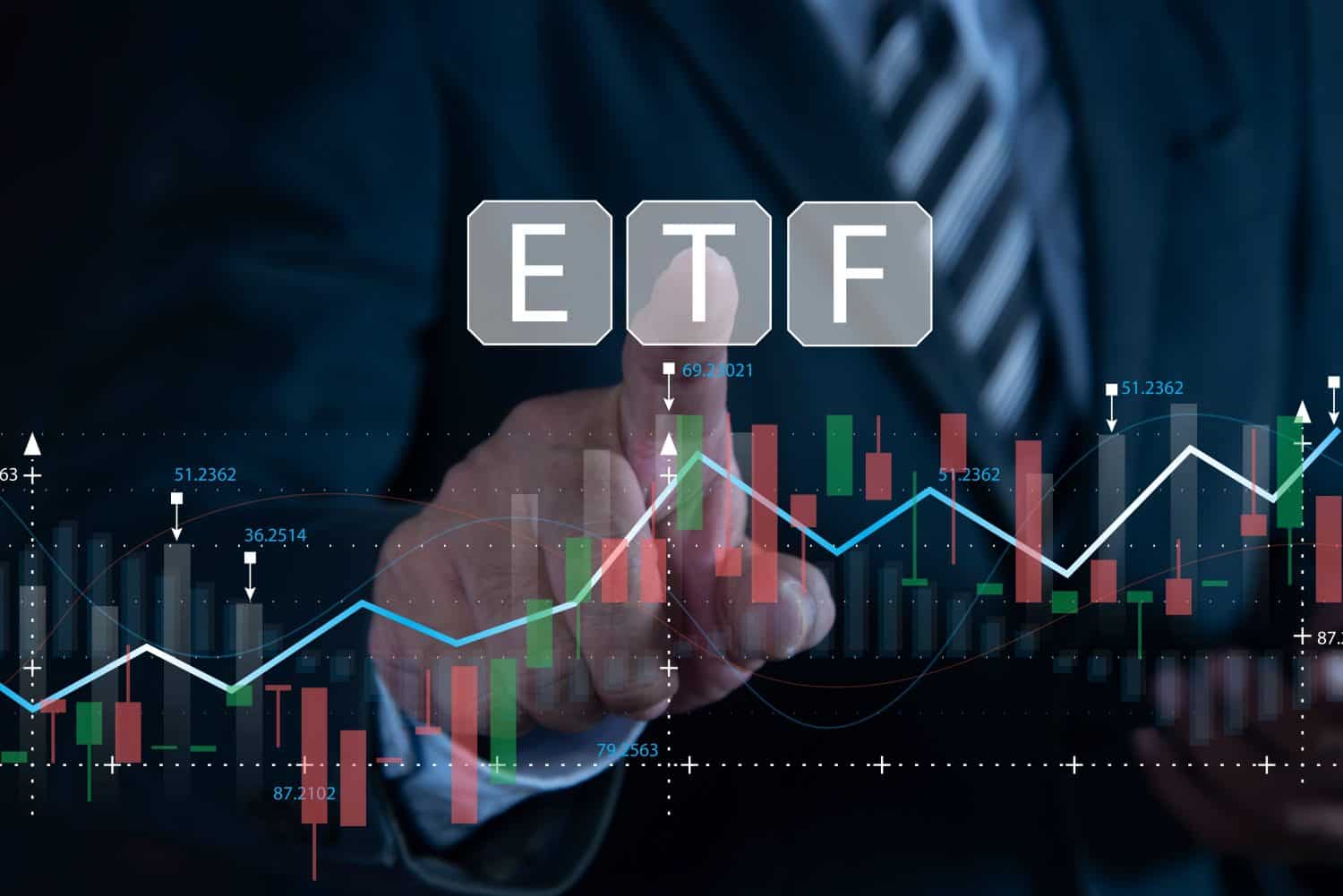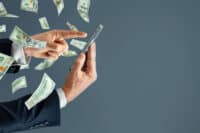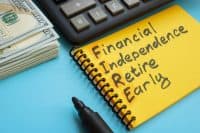
This post may contain links from our sponsors and affiliates, and Flywheel Publishing may receive
compensation for actions taken through them.
compensation for actions taken through them.
24/7 Wall Street Key Points
- Schwab U.S. Dividend Equity ETF (NYSE: SCHD) and Vanguard Dividend Appreciation Index Fund ETF (NYSE: VIG) are both geared towards investors seeking a combination of dividend income and sufficient growth to maintain the basic principle size of the nest egg for the duration.
- The aforementioned ETFs have different index benchmarks and investment focus, despite being allocated to the same category.
- Individual investment considerations and preference for higher income or better long-term capital appreciation are greater determinants of suitability, once the other criteria is evaluated.
- Retiring early is possible, and may be easier than you think. Click here now to see if you’re ahead, or behind. (Sponsor)
Exchange Traded Funds (ETF) predicated on tracking a particular index are normally passively managed and closely follow their benchmark. Retirees seeking a consistent level of income while notching enough growth to keep the size of their nest egg from eroding may choose ETFs over individual stocks. This can be due to intimidation over the notion of managing their own portfolios, the comparative ease with which ETFs reduce risk through diversification, and the relatively low expense ratios, which means that the bulk of the invested funds are going into the investment itself, rather than irrecoverable fees.
In general, the dividend ETF sector has underperformed the S&P 500 over the past few years, but since the Dow Jones Industrial Average has dropped as much as 2,600 points in the month of December, 2024 at the time of this writing, that trend may be seeing a reversal on the horizon.
Schwab U.S. Dividend Equity ETF

Best known for being the 800 lb. gorilla of the discount broker field, Charles Schwab in-house products cover a wide range of areas in the ETF and mutual fund arenas. The Schwab U.S. Dividend Equity ETF uses the Dow Jones US. Dividend Index as its benchmark. Its yield is 3.50%. SCHD’s Beta is 0.77 and its expense ratio is 0.06%. The fund’s primary objective is solid income from large cap companies that have capital appreciation history over the long haul.
Stock Requirements for SCHD to join its 103 stock listing roster include:
- Minimum of 10 consecutive years of dividend payments.
- $2 million minimum 3-month trading volume average.
- Market cap minimum of $500 million.
As of mid-December, SCHD’s most heavily weighted sector exposures are in Financials (20.13%), Healthcare (14.68%), and Consumer Defensive (13.24%). Its top 10 holdings in descending portfolio weight are:
1) Cisco Systems, Inc. 2) Bristol-Myers Squibb Co. 3) Home Depot Inc. 4) BlackRock, 5) Chevron Corp. 6) Verizon Communications, Inc. 7) Altria Group Inc. 8) Texas Instruments, Inc. 9) United Parcel Service Inc. Class B 10) AbbVie Inc.
SCHD has Morningstar’s Gold Standard rating. Its market volatility risk is decidedly low, although its performance has been undermined by its weightings in consumer defensive and healthcare, which have both been weak this past year.
Vanguard Dividend Appreciation Index Fund ETF

As one of the largest mutual fund and ETF companies in the industry, Vanguard has a long history in growing its $9.9 trillion in net assets for satisfied customers around the globe. Citing the S&P U.S. Dividend Growers Index for its benchmark, the Vanguard Dividend Appreciation Index Fund ETF strives for a mix of capital appreciation and income from dividend king companies, i.e. those with a history of dividend increases accompanying growth. Its yield is 1.67% with Beta of 0.81 and a 0.06% expense ratio. The dividend increases have to be consistent for a minimum of 10 years. Surprisingly, the top 25% of companies with the highest yields are excluded from the 330+ stocks on the VIG roster. VIG has a Morningstar gold ETF ranking.
VIG’s market sector exposure weightings have given it a better comparison to the S&P 500, as its primary focus is in Technology (24.41%), Financial Services (21.5%), and Healthcare (14.65%). Its top 10 holdings are:
1) Apple, Inc. 2) Broadcom Inc. 3) JP Morgan Chase & Co. 4) Microsoft 5) UnitedHealth Group 6) Exxon Mobil 7) Visa Inc. 8) MasterCard 9) Costco Wholesale 10) Home Depot.
SCHD and VIG Head to Head Matchup

Neither SCHD or VIG is likely to be a runaway leader in the dividend ETF sector, due to their index based nature and conservative, low volatility Beta. From a dividend perspective, excluding high-yield REIT and BDC companies from their respective portfolios relegates their dividend yields to the under 5% zone unless extenuating market circumstances dictate otherwise.
Based on consensus ratings from 101 Wall Street analysts, 55 rate SCHD a Buy, 39 rate it a Hold, and 7 have Sell ratings, so the average rating is “Moderate Buy”. The average 12-month consensus price target is $31.24. Over the past 1-3 years and adjusted for a 3-for1 split in October, the ETF has stayed in a roughly 4-point trading zone. Over the past 10 years, SCHD has appreciated by about 130%, so it’s certainly not a high-flyer by any market standard.
Out of 340 Wall Street analysts, VIG has 230 Buy ratings, 101 Hold ratings and 9 Sell ratings for an average “Moderate Buy” consensus rating. Its 12-month average consensus target price is $225.78.
Retiree Requirement Bottom Line
The Schwab US Dividend ETF is often referenced as a choice ETF for retirees, including in past 24/7 Wall Street articles. The Vanguard Dividend Appreciation ETF has also seen previous coverage, with the emphasis on annual dividend “raises” being its main attraction over a higher yield provided from the outset.
The crux of the difference between VIG and SCHD for retirees essentially comes down to retirement emphasis. Retirees using an ETF as one component of an overall strategy where a higher dividend and principal stability is deemed the most important factor will lean more towards the Schwab US Dividend ETF. Its yield is double that of VIG’s, and retirees focused on income will prefer it.
Conversely, other retirees who are more concerned with growing their nest egg while getting a smaller income from an ETF will favor the Vanguard Dividend Appreciation Index Fund. The vast majority of dividend king companies that can afford to annually raise their dividends do so because their growth rate is generating excess profits that can be remitted to shareholders. The resulting combination of capital appreciation upside and increasing income, albeit from a smaller starting point than with SCHD, can deliver a peace of mind to retirees concerned about principal erosion of their nest eggs.
It’s Your Money, Your Future—Own It (sponsor)
Retirement can be daunting, but it doesn’t need to be.
Imagine having an expert in your corner to help you with your financial goals. Someone to help you determine if you’re ahead, behind, or right on track. With SmartAsset, that’s not just a dream—it’s reality. This free tool connects you with pre-screened financial advisors who work in your best interests. It’s quick, it’s easy, so take the leap today and start planning smarter!
Don’t waste another minute; get started right here and help your retirement dreams become a retirement reality.
Thank you for reading! Have some feedback for us?
Contact the 24/7 Wall St. editorial team.




